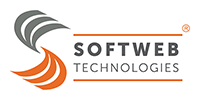Climate Change is an undeniable truth and sustainability has become a pressing concern for business houses. In these times, apart from the fashion industry, very few other industries flaunt their sustainability credentials forcefully. Computer vision in retail which is an AI-based technology can help brands achieve their sustainability goals. The emergence of ‘fast fashion’ has led the fashion industry to rush for sustainability goals for participating in the cause of global warming and climate change.
The negative impact of the fashion industry on nature is quite of sizeable amount and that is why it is touted as “the second most polluting industry after oil”. The multilayered supply chain across the globe with a lack of transparency does not provide any concrete data but experts believe that the fashion industry’s carbon impact ranges from 4% (McKinsey and Global Fashion Agenda) to 10% (United Nations) of overall global carbon emissions.
Various fashion brands are promoting their sustainable fabric products across the globe, from making jackets from waste plastic bottles to sneakers made from sugarcane or mushroom yoga mats. Innovation and involvement of technology are inevitable in developing these new products keeping in mind the comfort and fashion involved in using it. But achieving sustainability does not limit itself to producing environment-friendly goods, rather well-coordinated steps could be taken in identifying the consumption pattern at the consumer or store level to curtail or plan accurate availability of inventory reduction in wastage.
Computer Vision in the retail industry can empower the fashion industry in attaining long-term sustainable goals for environmental benefits. Implemented at the store level, computer vision in retail can provide the end-of-the-funnel report of consumption and behavior patterns of customers to make strategic decisions towards sustainability.
Computer vision for fashion retail can be implemented in two areas for better results. Firstly, at the production stage and secondly, at the store level to understand and develop sustainability goals. Let’s see how computer vision can bring a change at the production level for sustainable fashion.
How Computer Vision can help Retail Merchandisers? Read Here
Sorting and Recycling: Computer vision, with AI-enabled technology, can identify the type of fabric or textile used along with the type of color. This makes it easier to sort and recycle clothes. The fashion industry involves a multilayered supply chain and as the boundary line is spread across the globe, the source of production often remains opaque.
Apart from a few major brands that own and control their production units, the majority of the brands outsource their products, thanks to globalization. Computer vision, in these scenarios, can at least identify the material and color quality and sort accordingly for recycling helping brands attain sustainability.
Sustainable Material Identification: Even the brands that are particular about the quality of their products often have to procure raw materials from unidentified sources. Dubious methods can be involved in passing non-sustainable materials as sustainable fabrics leading to greenwashing.
Computer Vision as it is enabled by AI can identify sustainable fabrics like organic cotton or recycled polyester and other sustainable fabrics helping brands to conform to sustainable goals.
Quality Control: Computer vision can be majorly implemented in tracking quality control measures. It will be able to detect defective clothes at manufacturing levels and enable reduce waste by stopping it to reach end customers, bound for return. This way the production mechanism can also be streamlined for better results.
Computer Vision Can also be implemented at the store level to get a better understanding of customer or buyer behavior and the response toward sustainable fashion. Moreover, it can help fashion brands to increase engagement brands for customers. Computer Vision software like TORK- Retail works relentlessly to garner and process data to provide insightful information.
Personalization: Computer vision in a retail store can help in providing personalized offerings to customers. It can recommend products that match their preferred style. This can reduce the likelihood of customers purchasing clothes that they will not wear or return, reducing waste and promoting sustainable consumption.
Inventory Management: By using computer vision to track customer preferences and purchasing history, fashion brands can better manage their inventory, reducing the likelihood of overproduction and waste. Computer vision will help you understand the historical trends of fashion that moves for specific store or region. Based on these data inventory could be planned. This will enable the fashion retail stores to maintain a streamlined inventory helping to reduce any overproduction or stock rotation.
Computer vision in retail presents a significant opportunity for the fashion industry to improve sustainability and reduce waste. Softweb Technologies has been developing computer vision algorithms, with which fashion brands can improve the efficiency of their manufacturing processes, reduce fabric waste, and identify sustainable materials.
These technological advancements can enable the fashion industry to move towards a circular economy and promote sustainable consumption practices. Overall, computer vision in retail represents a promising tool for the fashion industry to make progress toward a more sustainable and ethical future.



Your writing style is engaging, and your post is full of valuable information. I’m eager to learn more.